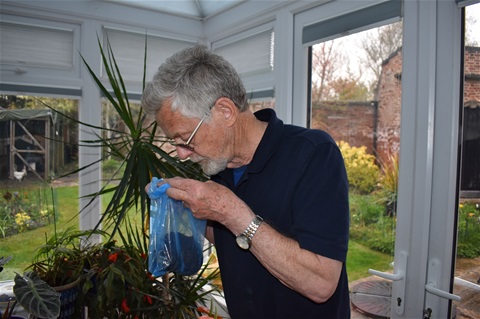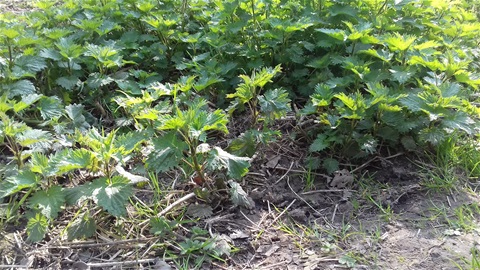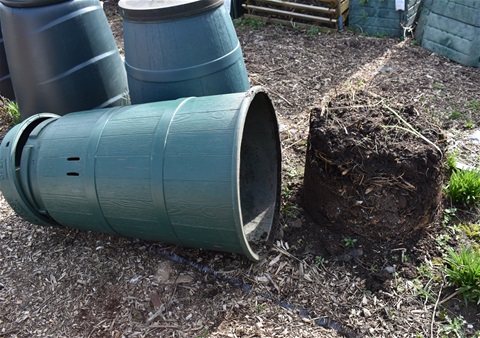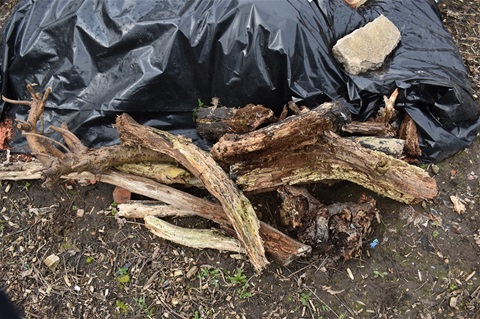It provides a means of composting woody material including quite thick logs and tree stumps. This is not intended to replace the insect
and hedgehog friendly wood pile in the garden but it does provide an interesting additional composting tool and offers an alternative to bonfires as an environmental friendly means of disposing of logs and other unwanted woody material without the need to
split, cut or chip the logs as they can be used whole A communal hügelkultur bed snaking its way across those areas where the ground is currently unsuitable for cultivation could become a of every allotment site
The base material
used in the bottom of the trench, or directly on the soil if a trench is not being dug, is wood of varying sizes. This can include rotting logs, sticks, branches, and twigs. The bed can also be built round tree stumps and provides a means of composting them.
The simplest bed suitable for a smaller garden or allotment plot can consist of small mounds about 60cm high of rotting wood or sticks placed on the ground directly on forked over ground layered closely together. Grass clippings and other nitrogen
rich greens such as manure are added filling any gaps between the logs. The mound is then covered by 5cm of topsoil or compost.
With larger mounds a trench is desirable, as it helps keep the mound tidy and retains moisture, but it is
not essential; the mound can be built straight on top of the soil or even on concrete. Where the mound is to be built directly on the soil a number of sources suggest mowing or strimming any grass and then covering the ground with damp cardboard.
The trench is dug, normally in a north south direction about 1.5 meters wide and 12" deep. It can be as long the compostable material available permits. The mound will shrink so build it higher than the final height that you would like the bed to
be.
Once the trench is dug a border of logs, boards or stones may be built round it to frame the bed and keep it tidy, alternatively a more natural mound may be built without a frame.
Logs, branches, and other woody
matter which decomposes slowly are placed in the bottom of the trench. The larger items are used first with the smaller branches, twigs, leaves, wood chip and other compostable materials added over the top of the woody layer and to fill the gaps between the
larger pieces of wood. The addition of nitrogen rich urine is said to be beneficial If the mound is being built in the New Year the discarded Christmas tree can be included in this layer. It helps if the larger stumps and logs are already rotting.
If turves have been saved, they should be placed upside down (with the soil/roots up) over the woody material forming a domed cover. Water the turves and each subsequent layer as it is added.
The turves are in turn covered
with a about an 8”- 12" thick layer of garden waste, leaves and the usual compostable materials. As with the woody layer use the larger items first. This in turn is covered by a 4 - 6” layer of semi-mature compost or manure. These layers can be
repeated until the desired height is reached (remember the mound may shrink by a half during the first year).
The soil removed when digging the trench is then used as a final layer to cover the pile. If the mound is built correctly the
heat released by the decomposition will warm the soil helping to extend the growing season



